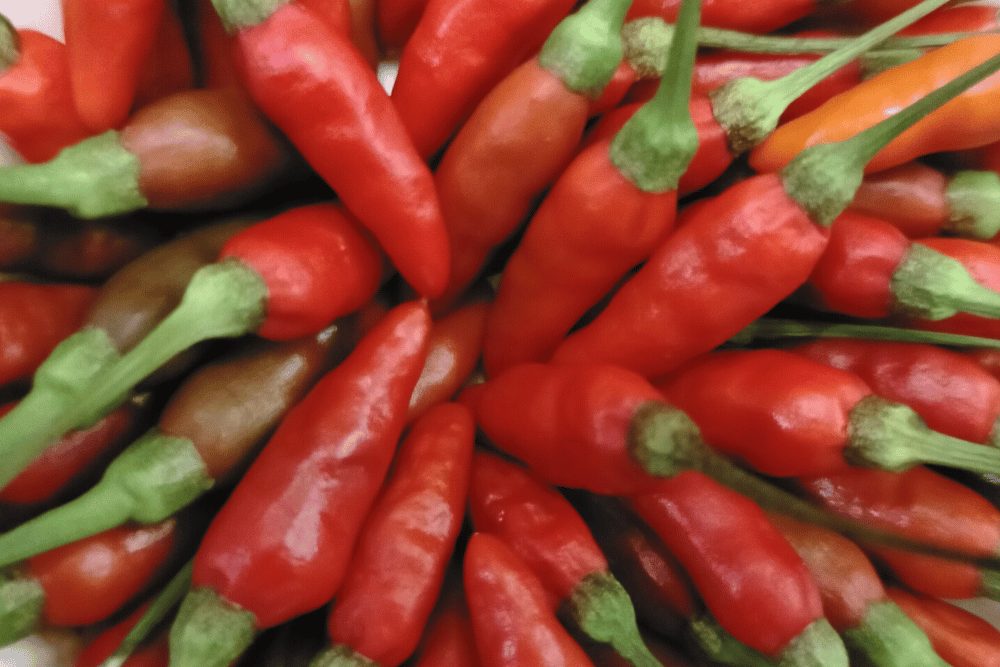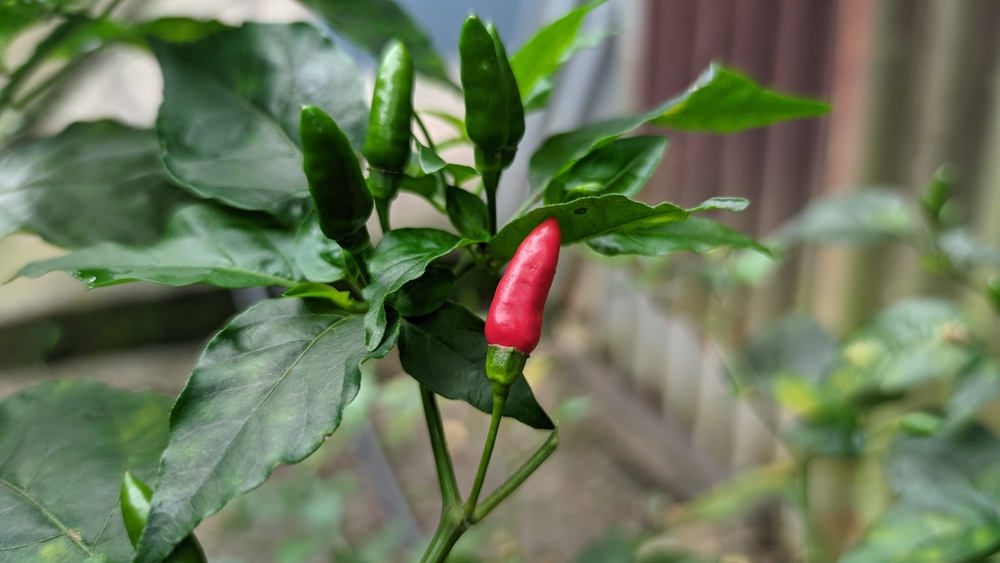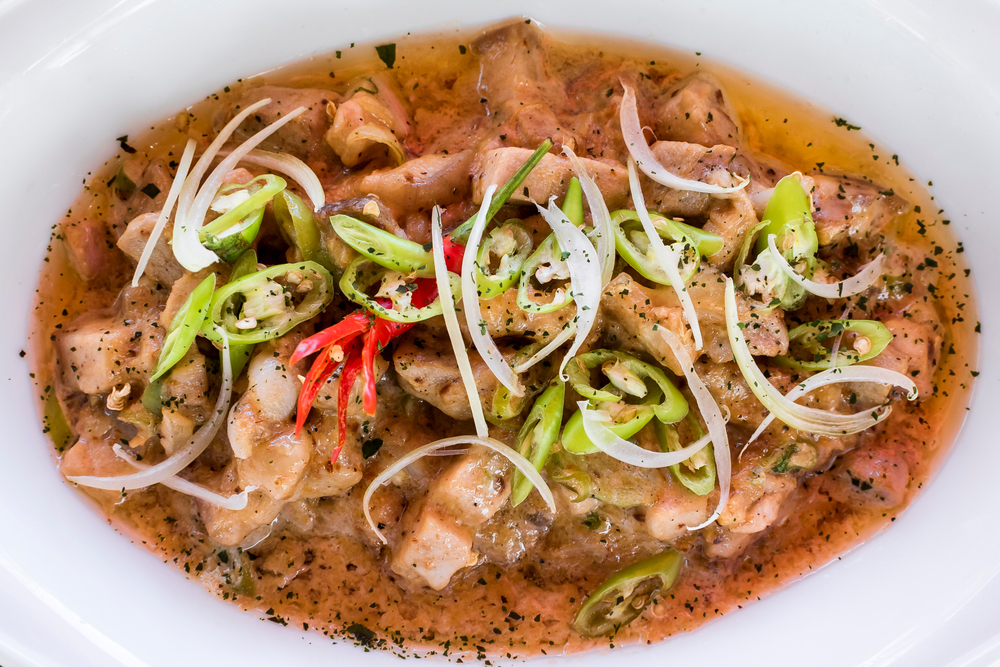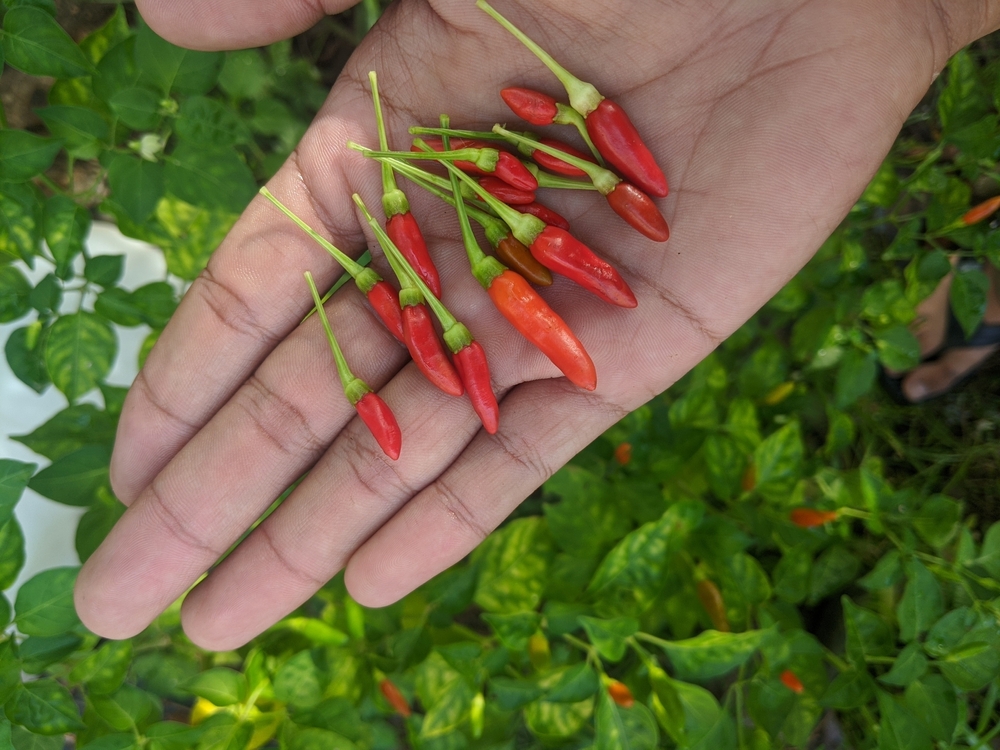Often deliberately confused with bird's eye Thai chilis, siling labuyo peppers are small chilis native to the Philippines. These chilis are generally accepted as the smallest peppers in the world, but they pack a serious punch at 80,000-100,000 SHUs.
What Is A Siling Labuyo Pepper?
A siling labuyo pepper is a small chili pepper cultivar native to the Philippine archipelago. It is grown primarily for its heat rather than flavor.
Siling labuyo chiles are generally accepted as the smallest peppers in the world and were once in the Guinness Book of World Records as the world’s hottest peppers.
However, the introduction and development of other larger, more prolific chile peppers led to a decline in the popularity and cultivation of siling labuyo peppers.
The decline has seen the peppers listed on Slow Food’s Ark of Taste in 2014 as an endangered species at risk of extinction.
Even as sellers deliberately confuse them with Thai bird’s eye peppers, siling labuyo peppers are uniquely identifiable by their color, small size, growth behavior, shape, and flavor.

Origin
Siling labuyos originated from South and Central America and were brought to the Philippines by Portuguese and Spanish explorers during the Columbian voyages era.
The peppers grew in the wild for years. They acclimated to the climate and soil of the Philippines to finally evolve into the modern-day siling labuyo that has become an heirloom pepper variety native to the country.
Other Names
The name ‘siling labuyo’ is the Philippines Tagalog word for ‘wild chili.’ It draws from the Tagalog word ‘sili’ for ‘chili’ and ‘labuyo’ for ‘growing in the wild.’
‘Labuyo’ is also used to refer to wild chickens that live in the wild in the Philippines that are credited for dispersing siling labuyo pepper seeds from the wild to farming areas.
Siling labuyo peppers are also called ‘labuyo,’ ‘labuyo peppers,’ or ‘labuyo chilis.’
The name Philippines bird’s eye chili or Filipino bird’s eye chili is used to differentiate labuyo chilis from bird’s eye Thai peppers.
Other local names for siling labuyo peppers include:
- Siling palay, chileng bundok, pasite, and pasitis in Tagalog.
- Siling kolikot, kitikot, and katumbal in Bisaya/Visaya.
- Paktin in Ifugao.
- Silit-diablo in Ilocano.
- Rimorimo, sambalas, and lada in Bicolano.
- Luya tiduk in Maranao.
Size And Shape
Siling labuyo chilis are small peppers measuring 1-1.5 inches long at full maturity.
They have a conical shape with a slender body that tapers to a rounded point on the end away from the stem.
Texture
The skin of labuyo chilis is firm, smooth, and glossy. It flows over crisp, aqueous, pale red flesh that encases a cavity with small cream-colored seeds.
Flavor
As mentioned, siling labuyo peppers are cultivated for their heat more than flavor. They have a subtle earthy flavor that is easily subdued by the peppers’ spiciness.
Color
Like other peppers, labuyos start deep green and usually ripen to vivid red at full maturity. However, depending on the cultivar and maturity stage, the peppers may manifest other colors like white (rare), vivid purple, orange, yellow, and even black.
Growth Behavior
Siling labuyos are a cultivar in the Capsicum frutescens species. They have tiny greenish-white flowers with purple stamens. These flowers produce little peppers that grow upwards, facing the sun.

How Hot Are Siling Labuyo Chilis?
If you are lucky enough to find true siling labuyo chilis, don’t be fooled by their small size! The peppers come in fiery hot with a Scoville Scale score of 80,000-100,000 Scoville Heat Units.
Compared to red jalapeno peppers (2,500-8,000 SHUs), the mildest labuyos are 32 times hotter than the mildest jalapeno, while the hottest labuyos are 12.5 times hotter than the hottest jalapenos.
The hottest siling labuyo pepper has the same heat level as the mildest scotch bonnet, wiri wiri peppers, and habanero peppers at 100,000-350,000 SHUs. Its heat also equals that of the hottest rocoto pepper (30,000-100,000 SHUs) or byadgi chili and chiltepin pepper at 50,000-100,000 SHUs.
Are Siling Labuyos The Same As Thai Chili Peppers?
Siling labuyos and Thai chili peppers are not the same thing.
Thai chili pepper is an umbrella term for over 70 types of Thai peppers with varying names, colors, heat levels, sizes, and shapes. They can grow up to four inches and are typically larger than labuyos.
Thai chili peppers typically have a pointed end, while the labuyos have a rounded tip.
The heat levels of Thai chilis range from mild to very hot, depending on the variety.
The umbrella heat range for Thai chili peppers is 0-100,000 Scoville Heat Units, meaning you can find a labuyo with the same heat level as the hottest Thai chili pepper.
Besides their appearance, siling labuyos and Thai chilis belong to different species. The labuyos are in the Capsicum frutescens species and grow facing upward. Thai chili peppers belong to Capsicum annuum species and grow humbled to the earth in a drooping position.
How To Use Siling Labuyo Peppers In Cooking
Siling labuyo features prominently in Filipino cuisine, especially in the spicy cuisines of the Luzon Islands and Bicol in the central Philippines.
To experience the fiery heat of the siling labuyos, you can use them in the following ways:
- In a dipping sauce for various grilled or fried Filipino dishes.
- Dry and ground into labuyo chili powder or hot pepper flakes for seasoning vegetables and fish dishes.
- To enhance the flavor of sweet and spicy Filipino ketchup made with spices, tomatoes, and bananas.
- Crush the peppers into vinegar to make an uncooked condiment for making chile oils, chili sauces, and liquid hot sauces.
- Eat them whole or chopped into soups, stews, fresh green salads, or curries.
- Cook the peppers by grilling or sautéing.
- Eat the pepper leaves as a vegetable. The leaves go well with Filipino dishes like chicken tinola (a warming soup often made with chicken), monggo (pork stew), ginisang munggo (sautéed mung beans), and seafood soups.
- Make siling labuyo sauce with the peppers.
If you want to try Filipino delicacies featuring labuyo peppers, try Bicol express or gulay na lada—a popular Filipino dish made with siling labuyo peppers, garlic, spices, coconut milk, onions, and sliced pork.

Where To Buy Siling Labuyos
Since siling labuyos are becoming less cultivated, they are hard to find in local markets in the Philippines. They are usually mislabeled by small and large merchants as bird’s eye Thai peppers from Taiwan to prey on unsuspecting customers.
The Filipinos usually grow labuyos in home gardens for cooking. But this culture is losing momentum. If you have a Filipino friend or visit the country often, you can buy true siling labuyos there.
Dried and powdered siling labuyo peppers are available online from retailers like Amazon.
Can You Grow Siling Labuyo Chilis?
Siling labuyo peppers are easy to grow in pots and direct gardens in sunny areas. The peppers do well in full sun and mature about 90 days after planting.
Start the seeds indoors in warm soil and transplant the young pepper plants outdoors after the last frost of the spring. You can buy seeds online from Amazon and other outlets that may carry true labuyo pepper seeds.
Substitutes For Siling Labuyo
Since siling labuyo peppers are used more for their heat than flavor, they are easy to substitute with spicy peppers like habaneros, rocotos, chiltepin, byadgi, wiri wiri, and scotch bonnet peppers.

